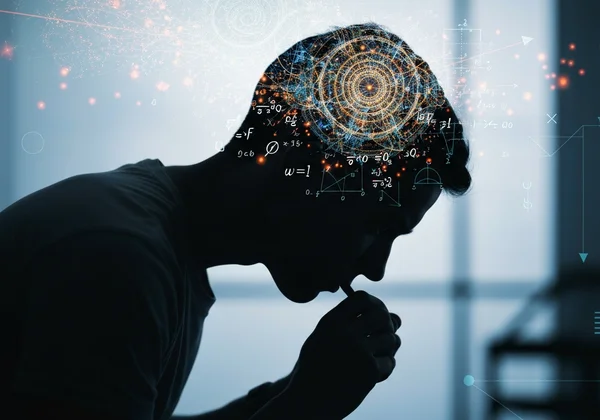The Neurodiversity Paradigm: Celebrating Autistic Strengths & What Our Autism Test Reveals
The human brain is a marvel of complexity, and just like our fingerprints, no two are exactly alike. For decades, differences in neurological wiring were often viewed through a lens of deficit. But what if we reframed this perspective? What is neurodiversity? This powerful concept shifts the conversation from "disorder" to "difference," celebrating the unique strengths and talents that come with varied cognitive styles. If you've ever wondered about your own unique patterns of thinking or are seeking to understand someone else's, exploring this idea is the first step. Understanding where you might fall on the spectrum of human cognition can be an enlightening journey, and a preliminary Autism Test can offer valuable clues. For those ready to begin that exploration, you can get preliminary insights on our homepage.
What is Neurodiversity? A Paradigm Shift in Understanding Brains
Neurodiversity is not just a buzzword; it's a fundamental shift in how we understand the human mind. It proposes that neurological variations like autism, ADHD, and dyslexia are not flaws to be corrected but are natural and valuable forms of human diversity. This framework moves away from a purely medical model, which often focuses on deficits, and embraces a more inclusive social model.
Beyond "Normal": The Spectrum of Human Cognition
The core idea behind neurodiversity is that there is no single "right" or "normal" way for a brain to function. Instead, there is a vast spectrum of cognitive differences. A "neurotypical" brain refers to one that functions in a way that society considers standard. A "neurodivergent" brain, on the other hand, operates, learns, and processes information differently. This isn't better or worse—it's simply different. This perspective helps dismantle the stigma associated with these differences, fostering acceptance and appreciation for all minds.

Origins and Evolution of the Neurodiversity Movement
The term "neurodiversity" was coined in the late 1990s by sociologist Judy Singer, who is on the autism spectrum herself. The neurodiversity movement grew from the autistic rights community and advocates for the idea that neurological differences should be respected as a social category, similar to ethnicity, gender, or sexual orientation. It champions the social model of disability, which argues that society's barriers—not an individual's impairment—are what truly disable people. This means the focus should be on creating more inclusive and accommodating environments rather than trying to "cure" or "fix" the individual.
Embracing Autistic Strengths: Unique Abilities & Contributions
By viewing autism through the lens of neurodiversity, we can move beyond the challenges and focus on the incredible strengths of autism. Many autistic individuals possess remarkable abilities that are highly valuable in our world. Recognizing these autistic talents is key to building self-esteem and creating opportunities for success. If you're curious about how these traits might manifest in yourself or a loved one, taking an online autism test can be a helpful starting point.
Deep Focus & Attention to Detail: The Power of Monotropism
Many autistic individuals experience monotropism, a tendency to have a limited but highly detailed attention tunnel. This allows for an intense, deep focus on subjects of interest, often called special interests. This ability can lead to profound expertise in specific fields, meticulous attention to detail, and an unmatched ability to concentrate on a task for extended periods, making them exceptional researchers, artists, and specialists.

Loyalty, Honesty, and a Strong Sense of Justice
A common autistic trait is a direct and honest communication style. While this can sometimes be misinterpreted, it stems from a deep-seated integrity and a preference for clarity over social nuance. Autistic individuals are often incredibly loyal friends and colleagues. They typically possess a very strong sense of justice and fairness, driving them to advocate for what is right and to hold themselves and others to high ethical standards.
Pattern Recognition & Analytical Thinking: Assets in Problem-Solving
The autistic brain is often exceptionally skilled at identifying patterns, seeing connections that others might miss, and engaging in systematic, logical reasoning. This makes many autistic people natural problem-solvers, innovators, and analysts. Their ability to approach challenges from a different logical framework can lead to groundbreaking solutions in fields like science, technology, engineering, and mathematics (STEM).
Creativity, Innovation, and Different Perspectives
Thinking differently naturally leads to seeing the world differently. This unique perspective is a wellspring of creativity and innovation. Many autistic individuals excel in creative fields, channeling their unique sensory experiences and deep focus into art, music, writing, and design. Their ability to think "outside the box" is not just a cliché; it is a fundamental aspect of their cognitive wiring that brings fresh and vital ideas to the table.
Navigating a Neurotypical World: Challenges and the Need for Support
Acknowledging strengths does not mean ignoring challenges. The neurodiversity paradigm fully recognizes that autistic individuals face real difficulties, primarily because the world is largely designed for neurotypical brains. The goal is not to deny these struggles but to provide the right support and accommodations to help neurodivergent individuals thrive.
Sensory Sensitivities: Creating Accommodating Environments
Many autistic people have heightened sensory processing systems. This can mean that bright lights, loud noises, strong smells, or certain textures can be overwhelming and even painful. Understanding these sensitivities is crucial for creating accommodating environments. Simple changes like providing noise-canceling headphones, offering quiet spaces, or adjusting lighting can make a world of difference in a person's ability to function comfortably and productively.

Social Communication Differences: Bridging the Gap
Autistic individuals process social information differently. They may not instinctively pick up on non-verbal cues, may prefer direct communication, and might find small talk confusing or exhausting. These are differences in communication style, not a lack of desire for connection. Bridging this gap requires mutual understanding. Neurotypical individuals can learn to be more direct and clear, while autistic individuals can learn strategies to navigate neurotypical social expectations. It is a two-way street built on empathy and respect.
The Importance of Support Systems and Self-Advocacy
Navigating a world that wasn't built for you requires resilience and support. Finding a community of other neurodivergent individuals can be validating and empowering. Additionally, developing self-advocacy skills—the ability to understand and articulate one's own needs—is essential for securing accommodations at school, at work, and in daily life. Professional guidance and tools can help identify specific needs and build confidence. Understanding your profile through a resource like our take our screening tool is a powerful first step in this journey.
A Neurodiverse Future: Celebrating Every Mind
Embracing neurodiversity is about building a future where every type of mind is understood, valued, and celebrated. It means recognizing that the strengths of autism—the deep focus, the unwavering honesty, the innovative thinking—are not just beneficial but essential for a vibrant and progressive society. Understanding is the first step toward acceptance, and self-understanding is the foundation for a fulfilling life.
We encourage you to continue this journey of discovery. Learn more about your own unique cognitive style and the beautiful spectrum of human neurology. If you suspect you might be on the autism spectrum, a screening can provide a valuable starting point for conversation and further exploration. Start Your Autism Test today and take the next step in understanding the unique way you experience the world.

Frequently Asked Questions About Neurodiversity and Autism
How Does Neurodiversity Relate to Autism Spectrum Disorder?
Autism Spectrum Disorder (ASD) is one of the most recognized forms of neurodivergence. Within the neurodiversity framework, autism is not seen as a "disorder" to be cured, but as a natural and valid neurological variation with its own unique set of strengths and challenges. It's a core example of the different ways brains can be wired.
Is Neurodiversity Just a "Positive Spin" on Disability?
No, the neurodiversity movement does not ignore or deny the disabling aspects that can come with being autistic in a neurotypical world. Instead, it reframes the source of the disability. It argues that the challenges are often caused by a mismatch between a neurodivergent individual's needs and an inflexible environment, rather than being an inherent deficit in the person. It acknowledges both the strengths and the need for support.
Where Can I Find More Resources on Neurodiversity and Autism?
Many reputable organizations advocate for the neurodiversity paradigm. The Autistic Self Advocacy Network (ASAN), the Neuro-Clastic, and various academic research centers provide excellent information. Following neurodivergent advocates and creators online can also offer invaluable firsthand perspectives and insights.
What Does a High Score on an Online Autism Test Mean in a Neurodiverse Context?
In a neurodiverse context, a high score on a screening tool like the one offered on our site doesn't mean something is "wrong" with you. It simply indicates that you exhibit a significant number of traits commonly associated with the autistic neurotype. It's a piece of data that suggests your brain may process the world differently. This information can be empowering, helping you to better understand your strengths, challenges, and needs, and can be a crucial first step if you decide to understand your results with a qualified professional.